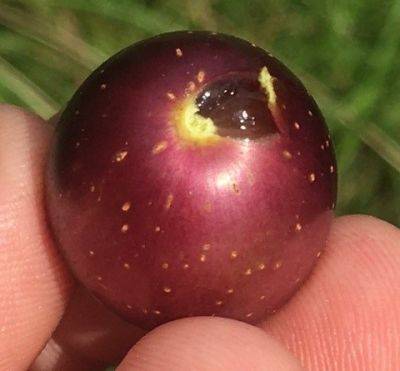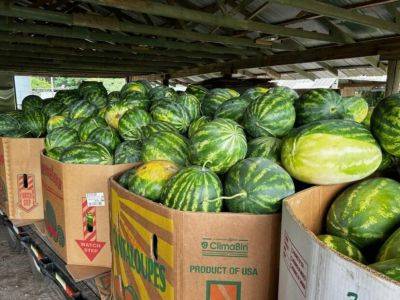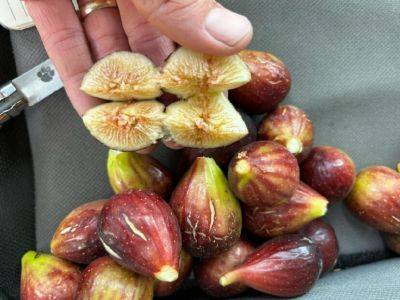Zack Snipes
SC Fruit and Vegetable Field Report – August 8, 2022
24.07.2023 - 12:00 / hgic.clemson.edu
Zack Snipes reports, “For the most part, it has been hot and dry in the Lowcountry. Things are relatively quiet. I have seen and heard reports of high whitefly numbers in various crops (melons, tomato, and blackberry). We had severe disease outbreaks a few years ago due to a few whitefly-vectored viruses. The two prominent viruses I have seen vectored by whitefly are Tomato Yellow Leaf Curl Virus and Cucurbit Leaf Crumple Virus: See article from 2019 outbreak. If growers have not already planted their fall melons and tomatoes, it would be a good idea to investigate varieties that have resistance to tomato and melon whitefly vectored viruses. I have also seen very high numbers of melonworms as of late.
Justin Ballew reports, “Last week was another warm one with a few isolated showers and thunderstorms. We’ve had some fall brassicas, peppers, tomatoes, and eggplant planted, which should continue this week. Be sure to look carefully at your transplants before planting (and before accepting the delivery, if possible) to ensure they are free of disease and insects. We have seen cases recently where we strongly suspect insecticide resistance issues were introduced to the farm by insects that arrived on transplants. Fall can be a tough season for insects and diseases, so be sure we’re starting clean.”
Sarah Scott reports, “We are still harvesting peaches along the Ridge. Later season varieties, such as Big Red, are being harvested now, and the season should start to wrap up in the next couple of weeks. Post-harvest applications of insecticides for borers are being applied. Orchards that are older and less productive are being pushed up post-harvest. These trees are uprooted and burned on site to prepare for new planting areas.”
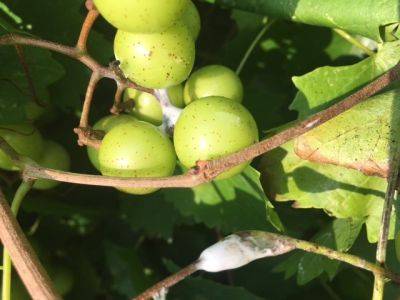
SC Fruit and Vegetable Field Report August 9, 2021
Rob Last reports, “Generally speaking, we are in the changeover period from spring to fall crops, with some fumigants being applied to next year’s strawberry plantings. If fumigants are used, make sure soil moisture is good and beds are firm to maximize efficacy. One thing we have observed in blackberries and blueberries in the area is the emergence of bark scale. Bark scale is a new pest to South Carolina and has previously been noted in ornamentals. However, reports for Asia, where the pest is native, indicate the bark scales can survive on Rubus species.
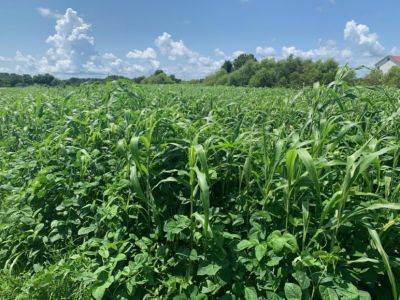
SC Fruit and Vegetable Field Report August 16, 2021
Zack Snipes reports, “It’s hot and humid in the Lowcountry. Fall tomato and watermelons are in the ground and enjoyed a week of mostly dry weather. Okra and sunchokes, aka Jerusalem artichokes, are loving this heat. Except for those crops, there aren’t too many crops in the ground right now. I am seeing lots of summer cover crops. I love the idea of using a mixed species of cover crop. One reason is that it spreads out the risk that one of the species in the mix won’t germinate or be eaten by deer. So by using multiple species, you can almost guarantee that something will be there covering the soil. Multi-species mixes also provide different benefits to the farm. Cowpeas may fix nitrogen while sorghum X Sudan hybrids may be a deer deterrent and shade out weeds.”
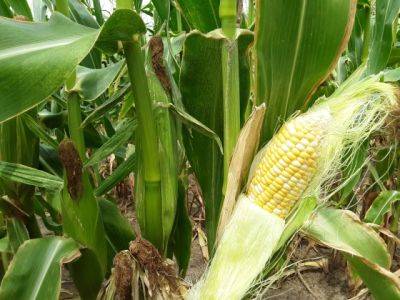
SC Fruit and Vegetable Field Report – August 2, 2021
Zack Snipes reports, “Summer crops like okra are still coming in and looking good. We’ve had a lot of rain, and some fields are soggy. More rain is coming. Some growers have started planting peppers and tomatoes. Remember to get out in the fields and destroy spring crop residue. Nematodes and other pests can really thrive on that old residue.”

SC Fruit and Vegetable Field Report January 18, 2022
Rob Last reports, “In our area, crops are developing well with few pest or disease issues currently. Some brassicas are displaying a reddening to the older leaves associated with reduced phosphorous uptake. Phosphorous uptake can be reduced in cold temperatures but will recover when we see some warmer temperatures. There is no response to an additional application. Where strawberries are flowering or have fruit, it is advisable to remove those to minimize sources of Botrytis gray mold for later in the year.”
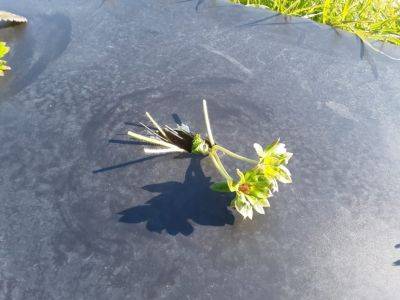
SC Fruit and Vegetable Field Report – January 31, 2022
Rob Last reports, “Pest and disease issues in the area remain very low; however, as temperatures rise, we expect activity to increase. Although it is quiet, it is still essential to continue to scout. Assessment of crops indicates that we have escaped the worst of any chill injury or loss of plants. Pruning of fruit crops continues while dormancy holds and labor begins to return to the area.”
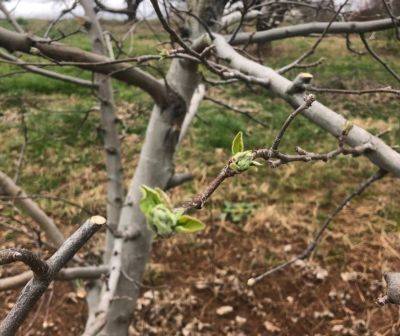
SC Fruit and Vegetable Field Report- March 14, 2022
Dr. Matt Cutulle reports, “I saw my first nutsedge plants this year pop up in the plastic mulch of a fellow researcher’s trial last week in Charleston. Soil temperatures in plastic mulch systems are going to be higher, which may lead to earlier sprouting of yellow nutsedge tubers. New tubers begin forming four to six weeks after a new shoot emerges. Individual nutsedge plants may eventually form patches 10 feet or more in diameter, thus it is important to practice field sanitation once an infestation is recognized.”
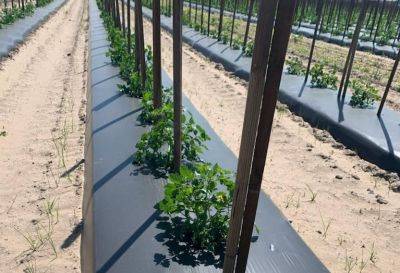
SC Fruit and Vegetable Field Report – April 18, 2022
Zack Snipes reports, “It has been a very windy spring. The winds are drying out our soils and beating up plants. I have looked at some tomatoes, and the ones that aren’t tied are wind-whipped, and the ones that are tied have callus tissue forming where the string is touching them. We have some beautiful lettuce and greens coming in right now, along with spring onions. I have also seen some squash coming in on farms that grew squash in high tunnels. Strawberry plants are still small and have very few blooms for this time of year. We are harvesting highbush blueberries in high volumes right now. I think we escaped more cold damage than previously expected.”
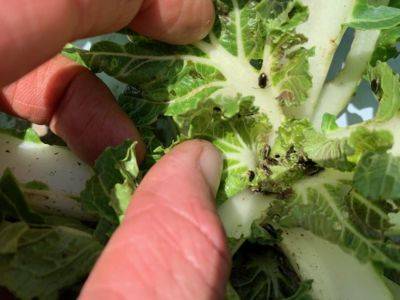
SC Fruit and Vegetable Field Report – May 31, 2022
Zack Snipes reports, “It seems like everything is coming in from the fields right now. We got some rain but could really use some more. I am seeing lots of aphids on a variety of crops (melons, cukes, eggplant). I am also seeing ladybird beetles and parasitized aphids in these fields, which means our predators are out there working for us. Bacterial wilt and Southern blight are starting to appear on tomatoes as well. Knowing the difference and preparing for next season’s crop is critical. It is getting hot and is still windy, so growers might consider adding one or more irrigation cycles to their fields. Remember that in our sandy soils, any irrigation event over an hour is just wasting water. More frequent 30-45 minute cycles are more efficient.”
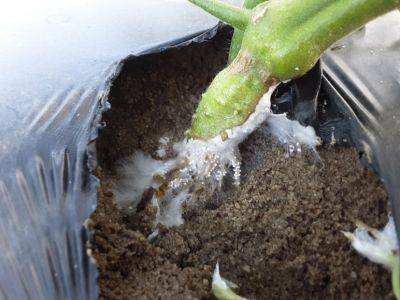
SC Fruit and Vegetable Field Report – June 6, 2022
Rob Last reports, “Insect and disease activity is increasing in the area, across a broad range of crops. In cucurbits, we are seeing powdery mildew and gummy stem blight in watermelon. Remember to keep spray intervals tight. Loopers are also being found in the area, and applications to manage rind worms will be beneficial as we rapidly approach harvest. Fusarium wilt of watermelons is showing up in many fields. At this stage, there is no effective treatment; however, soil temperatures are likely to reduce the incidence of new infections. Tomatoes and peppers are developing well with Southern blight and bacterial wilt in evidence. Spider mites are very active right now. Blackberries are just coming to harvest with good flavor and quality. Remember to scout your crops regularly to ensure timely applications can be made.”
